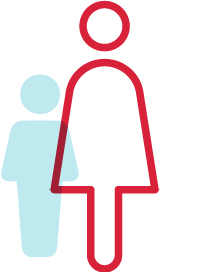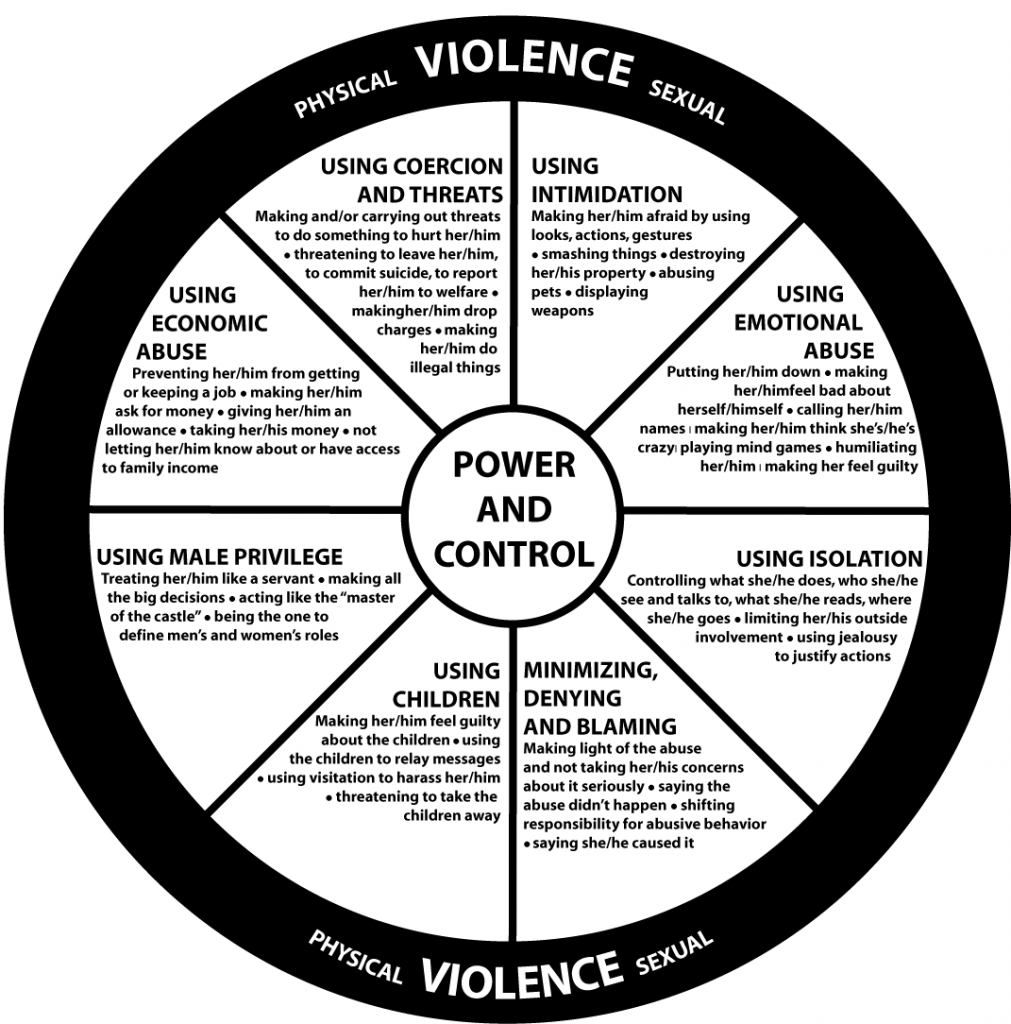

-
 25% of womenhave experienced physical or sexual violence from a partner.
25% of womenhave experienced physical or sexual violence from a partner. -
 Every weekone womanis murdered by a current or ex-partner.
Every weekone womanis murdered by a current or ex-partner. -
 Family violence is themain causeof homelessness for women.
Family violence is themain causeof homelessness for women. -
 1 in 4children are exposed to family violence.
1 in 4children are exposed to family violence.
Family violence is a pattern of behaviours used by one person to assert power and control over a family member or someone they are in a relationship with. It can include both physical and non-physical forms of violence. Violence that occurs within relationships is called intimate partner violence. Women make up 77% of victims of intimate partner violence, with the majority of perpetrators being men. However, violence can occur in any intimate relationship regardless of the gender of the people in the relationship, or their relationship status. This includes people in de facto relationships, same sex relationships and queer relationships.
Family violence occurs across all sectors of Australian society regardless of socioeconomic status. Research has shown that women with disabilities and Aboriginal and Torres Strait Islander women are at a higher risk of experiencing family violence. Women from marginalised backgrounds including CALD, Aboriginal and Torres Strait Islander, LGBTIQ+ people and women with disabilities may also experience added barriers to seeking help and support.
Although family violence is most common in intimate relationships it can also occur in any type of family relationship. For example, between an elderly parent and their adult child, a teenage child and other family members or between adult siblings.
Family violence is an entrenched epidemic that we've lived with since time began, so we've got a long way to go. But I do believe the tide is turned. It's no longer a subject that only occurs behind closed doors.
Rosie Batty
Types of violence
There are a number of different behaviours that can be considered abusive, these include:
Physical abuse - the use of physical violence such as punching or kicking or threatening to use physical violence against someone, their family members or children.
Emotional abuse - constantly putting someone down, gaslighting or using emotional blackmail like threatening to commit suicide if they leave.
Financial abuse - controlling someone’s access to money.
Sexual abuse - forcing someone to participate in sexual activity without their consent.
Social abuse - stopping someone from engaging socially with other people, like family members, friends or colleagues.
Spiritual abuse - denying someone their right to practice their religion or using religion to control someone.
Stalking - constantly following or contacting someone against their will.
Image-based abuse - sharing, or threatening to share, intimate images of someone.
Abusers may use a number of different forms of violence to assert control over their partner or a family member, this may or may not include physical violence.

This power and control wheel shows the way perpetrators use a combination of different forms of violence to control their partner.
The effects of family violence
Family violence can affect every aspect of a person’s life, and have long lasting impacts even after the victim-survivor has left a relationship. It can have a huge effect on a person’s physical and mental health and wellbeing. If a victim-survivor has been subjected to physical abuse they may suffer from long-term health problems due to the injuries they sustained. Mental health may also be severely impacted due to repeated emotional abuse, social isolation and gaslighting. Victim-survivors may experience mental health issues such as anxiety, depression or post-traumatic stress disorder.
Unemployment is another common impact of family violence due to time taken off work to attend to physical injuries or mental health issues, or because they are forced to give up their job by the abuser, in an effort to control their access to money. This can lead to financial dependence on the abuser adding another barrier to leaving the relationship.
If a victim-survivor does decide to leave the relationship housing can become an issue, with family violence being the largest cause of homelessness for women in Australia. Many victim-survivors leave with nothing, and therefore struggle to find housing without money for a private rental. Public housing has long waiting lists and strict eligibility criteria, making it inaccessible to many victim-survivors. Some victim-survivors may need to live at a women’s refuge at an undisclosed location to ensure their safety. Refuges provide accommodation and other forms of support and advocacy for women and their children fleeing family violence.
It is also common for women who have experienced intimate partner violence to be drawn into the court system in often lengthy processes. This may be through the family court system or to obtain a protection order. A protection order prevents the perpetrator from coming into contact with the victim-survivor, this can include being physically near them or contacting them over the phone or internet. Protection orders are not a criminal offence but it is against the law to breach one. Protection orders have different names in different states:
-
Protection Order (QLD)
-
Apprehended Domestic Violence Order (NSW)
-
Intervention Orders (VIC and SA)
-
Family Violence Restraining Orders (WA)
-
Family Violence Order (TAS)
-
Domestic Violence Order (ACT and NT)
The court process can be retraumatising for victim-survivors who have to retell their story, see their abuser in court and prove that the abuse did occur. It can also have a huge financial toll through lawyers' fees, missed work and the need to organise childcare. Some victim-survivors may not be eligible for legal aid, and be unable to pay for a lawyer and end up representing themselves in court.

I met him online. In the early days he gave a very false impression of himself. The man I left was not the same person as the person I had met online.
Anne's story.
Effects on children
Witnessing family violence can affect the wellbeing and developmental growth of children. Some of the impacts on children who witness violence in the home include:
-
Bed wetting
-
Mental health conditions such as anxiety and depression
-
Headaches or stomach aches
-
Irregular bowel habits
-
Short attention spans
-
Fatigue
-
Engaging in risky behaviour
Children who live in violent homes are also at higher risk of experiencing child abuse. Children may be impacted in different ways depending on how old they are and how long they are exposed to the abuse. More information is available at the Domestic Violence Prevention Centre.
These impacts can be deeply concerning for the parent that is experiencing the abuse, but may improve once the child is in a safe environment. As someone working directly with customers, you may be able to provide support for a person experiencing violence. To find out how go to our information on supporting a client experiencing abuse.


